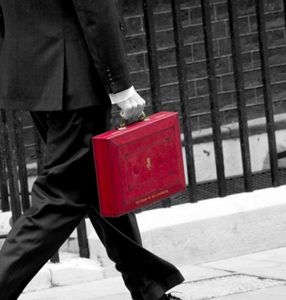Today we saw the Chancellor set out his stall for the UK economy, rightly prioritising fighting the pandemic and investing in the UK’s recovery. The spending review sets departmental budgets, establishing a long-term vision for government spending. However, this year’s spending review only covered one year (typically they span five years) given the uncertainty surrounding the pandemic. Despite this, the overall tone of the Chancellor’s speech was largely positive for business, reflecting many of the funding commitments the business community has been calling for.
Investing in Jobs
- An additional £3.7bn is being allocated to build on what we saw in the government’s Plan for Jobs in the summer; including a new Restart programme and further support for the Kickstart scheme
- On skills, the government announced £138m of new funding to deliver a Lifetime Skills Guarantee and £1.4bn of new funding to increase Job Centre Plus capacity.
Investment in transforming our infrastructure
- We finally saw the publication of the National Infrastructure Strategy, which sets out how the government plans to transform the UK’s infrastructure, importantly focusing on the road to net-zero and levelling up across regions
- To bring in the critical private investment to help fund this, businesses will be pleased to see a new infrastructure bank has been created, something the CBI called for in its submission.
A plan for reaching net-zero
- As part of the government’s Green Industrial Revolution, there will be an additional £200m investment in carbon capture initiatives and an investment of £525m towards new nuclear power
- Plus £1bn next year to insulate homes and public buildings, using the existing green homes grant.
A focus on levelling up across regions
- The Shared Prosperity Fund will match EU receipts averaging £1.5bn per year, plus an additional £220m to support local authority implementation
- The publication of an updated Green Book which considers regional distributional effects in government investment programmes
- There was also a new £4bn for a ‘Levelling Up Fund’ – to help bring shared prosperity across all regions.
Investing in the UK as a scientific superpower
- Businesses will be pleased to see a focus on innovation, with £15bn committed for R&D next year to boost the UK’s world class research base and drive economic growth.
What does this all mean for the outlook of the UK economy and the public finances?
As well as the government announcing its spending plans, we also saw an updated forecast from the OBR, the fiscal watchdog, setting out their expectations for the path of the UK economy and the public purse over the next five years.
Key takeaways
- Unparalleled discretionary spending related to COVID support, set to continue: today’s announcement confirms an additional £38bn for public services to continue to fight the pandemic this year, bringing total support for public services to £113bn in 2020-21, and total spending on the COVID-19 response this year to over £280bn
- COVID-related spending has led to UK borrowing second largest amongst G7 economies: borrowing is set to increase by the end of 2020/21 to £394bn (or 19% of GDP), reaching just under £100bn by 2024/25. The borrowing level expected by the end of this year is seven times higher than the £56bn we borrowed last year, twice what we borrowed at the peak of the financial crisis, and the highest level since the height of the Second World War. While central forecasts see borrowing falling to 4% of GDP by the end of the forecast period, levels of borrowing 5 years from now will still be around £40bn higher than forecast earlier in March, reflecting the 3% long-run loss of output.
- This means that public sector net debt continues to rise relative to GDP over the next 5 years from 105.2% in 2020/21, to 109.4% by 2023/24: Underlying debt excluding Bank of England as a share of GDP will also remain higher than the Budget 2020 in every year of the forecast in all scenarios, reaching 91.9% in 2020-21 in the central forecast (or 105.2% inc. BoE)
- In the final year of the forecast, underlying debt reaches 83.4% in the upside scenario (exc. BoE), 97.5% in central scenario, and 115.7% in the downside scenario.
- OBR estimates £20bn-£30bn is needed to balance the books and stabilise debt
- It is therefore clear that fiscal consolidation will be needed.










